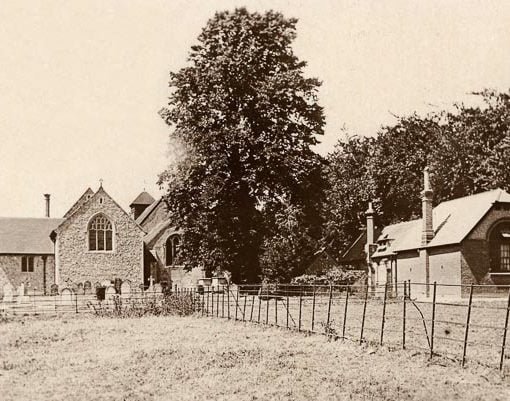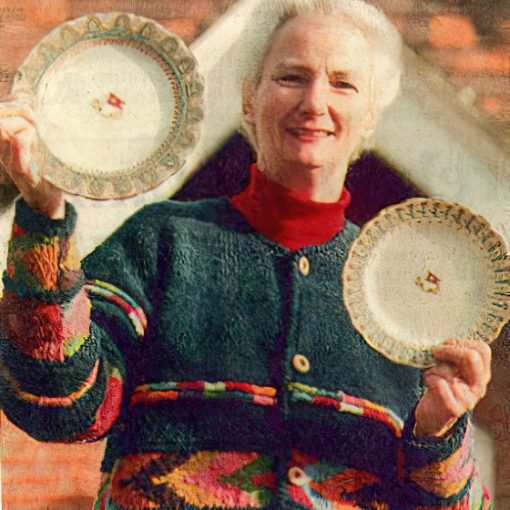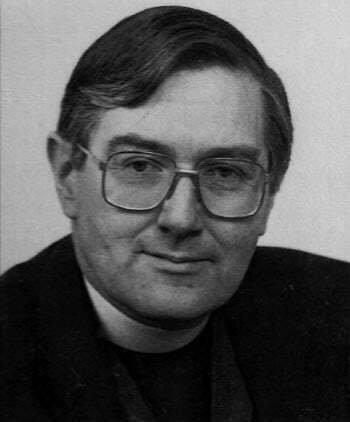For Compton & Shawford Local Historical Society.
By James Nairne[1]James dictated these memories for the parish magazine to his niece Kathy. She finished transcribing them (and reviewing them with other family members) just in time for James’ 100th birthday … Continue reading 1923-2024
James Nairne’s memories Part 1
My parents moved to Shawford in 1927 when I was 4 years old. My father, Lt.Col C.S.Nairne, had retired from the army at a relatively young age[2]James told me that his father’s early retirement from the army was a result of the “Geddes axe”, sweeping reductions in the size of the armed forces to save costs after the end of the Great War. and was now looking for somewhere to bring up his family.
When he heard that a local farmer was selling plots of land for £100 each, he had a look, saw the wonderful view towards Winchester Cathedral and decided to buy one.
The building of the house, Plover Hill, started in February 1927 and we moved in the following December, when I was just 4 years old. The house cost about £1000 to build.
There were no other houses nearby at first, except for one called Pilgrim’s which had been there since about 1890.
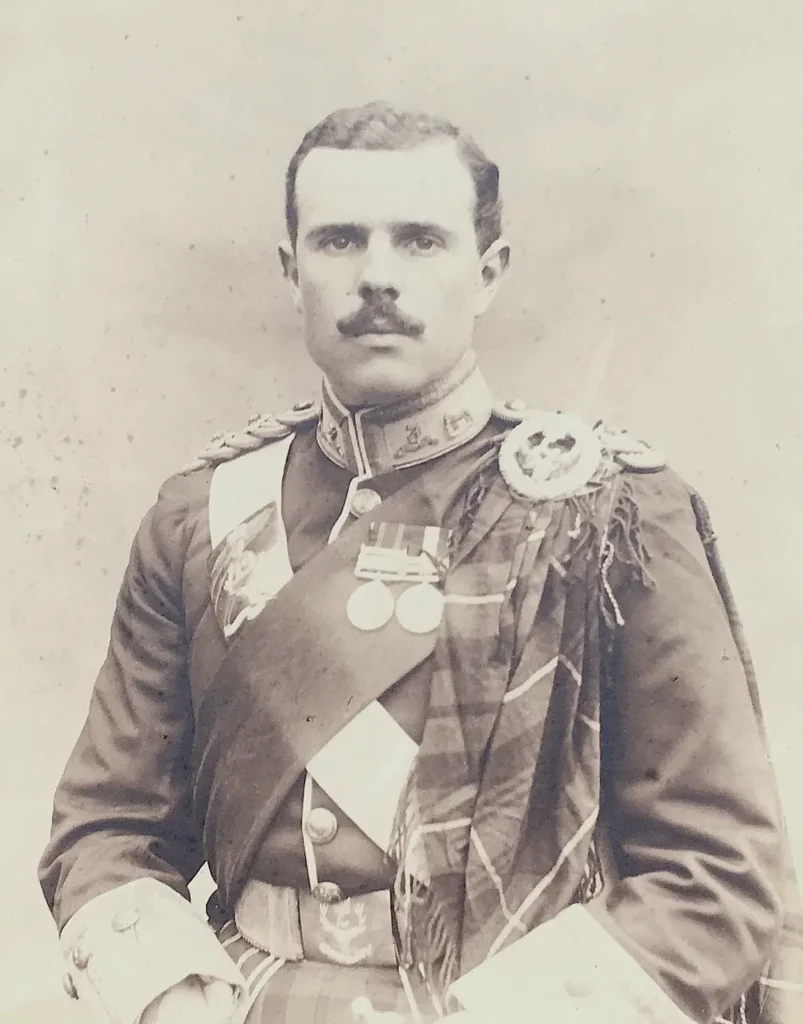
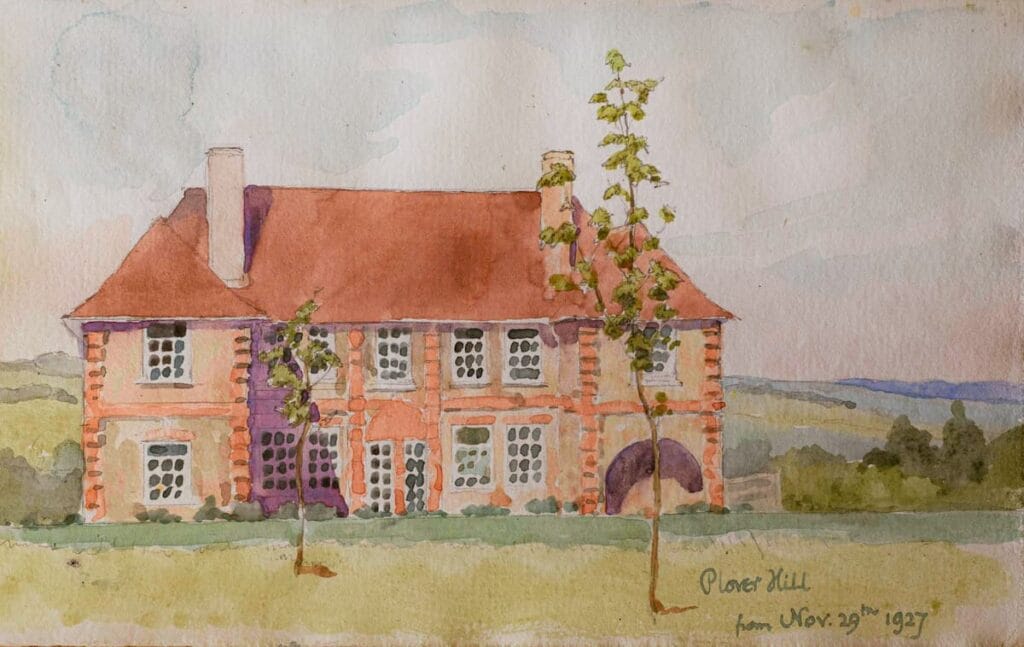
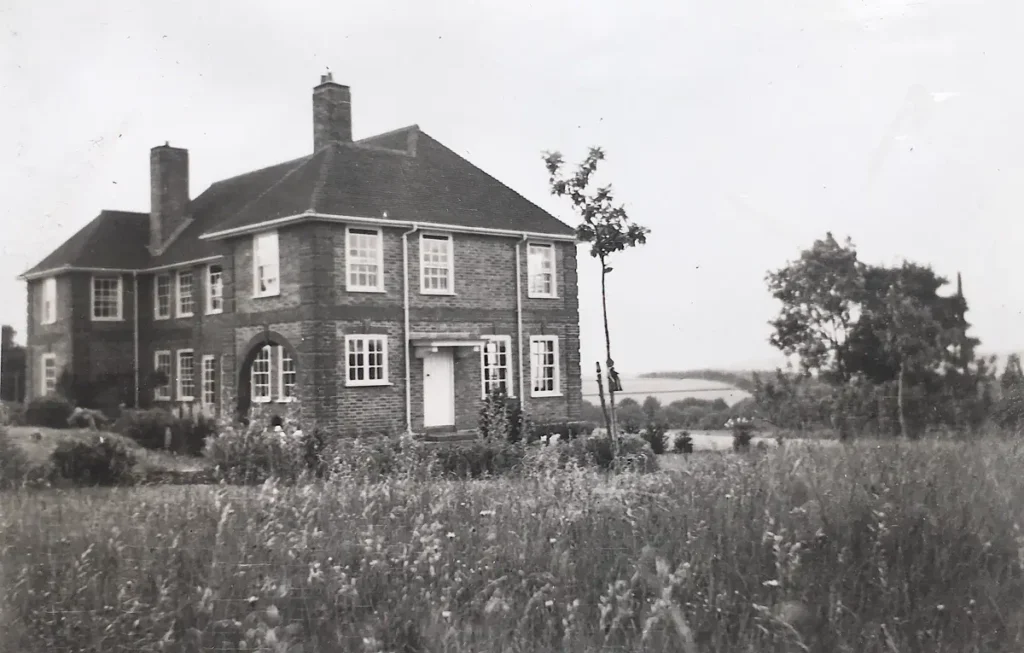
The first thing I remember about the house was going into the kitchen and thinking that it was rather dark and dingy.
There was a room upstairs for the children called the nursery and we had a nanny.
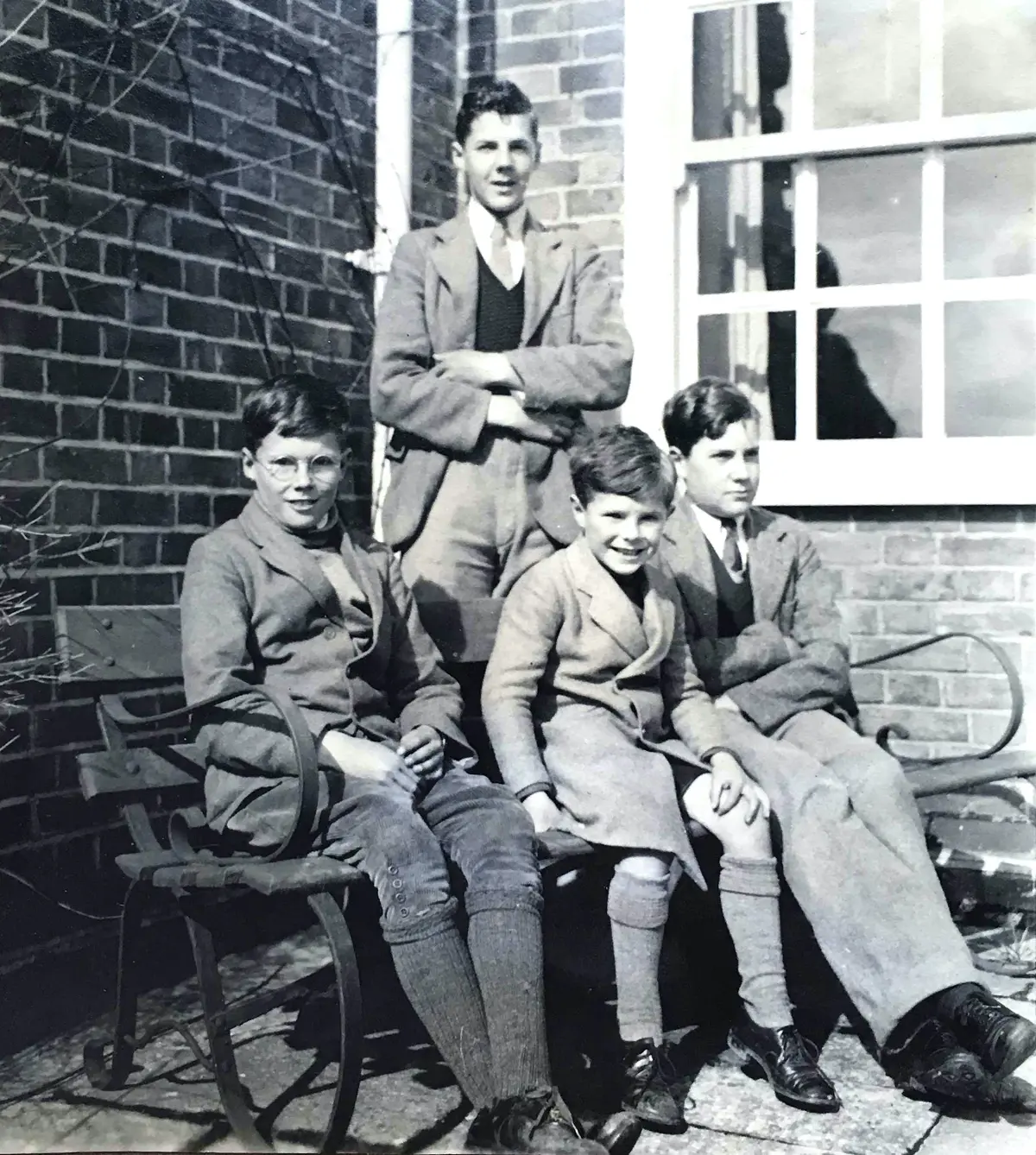
The one I remember the best was called Ethel and she was from a local family. We thought she was a very strict nanny, at least I certainly did, but she was generally a good sort.
It sometimes felt as though I could do nothing right in her eyes.
“James, tell me how you got that mark on your trousers or I’ll take you to the policeman.” If the offence was worse than that she’d say, “I’m going to take you straight to the police station.” or “James, I’ve had enough of you. I’m going to take you straight to the prison.” To this I said “How are you going to get there?” which was a provocative question. “You will walk there my son.”
She left our family when she married Ralph Burn, who was the church sexton and gardener[4]Ralph Burn gave a talk as one of four addresses at the “Songs of Praise” festival on 2nd November 1980, celebrating the 75th anniversary of the 1905 extension to All Saints’ Church, Compton, … Continue reading.
The first school to which we all went was called Shawford Preparatory School and was run by a Mrs Taylor. I suppose we got a basic education in English and mathematics and a little bit of history.
The two leading lights among the staff were two sisters who lived in Alresford. They came in a little two-seater car to take lessons in the school. One was a very likeable person and the other one I didn’t like at all. She said I was lazy, which was quite untrue.
Mrs Taylor herself was not the leading light. She was probably supervising in the back regions in relation to what the boarders would have to eat that day and what the schedule should be.
Most of the pupils there were day pupils, girls and boys; a few more girls than there were boys.
At Christmas we went to the pantomime in Southampton.
There were also a lot of afternoon parties for children around Christmas time. I used to think, “Anything to get out of these children’s tea parties.”
The ritual was always the same.
You had probably met the same children at one the week before. There were always more girls than boys, and of course, being a young boy, I rather disliked girls. They would ask questions, such as, “What have you been doing? Have you been out anywhere? What’s your name? When do you go back to school?”
All the parents would be sitting around, and they would say, “You have grown up, haven’t you?” No, I didn’t like those parties very much.
They were often in someone’s private house; a large old house that was larger than Plover Hill.
Some of those houses in Shawford had large rooms. Sometimes they hired the Cadena café which was in Winchester High Street, and is now the back entrance to Boots.
Other venues for Christmas parties were the Carfax hotel, next to the station, which is now an extension of the Winchester public library, a room in the Guildhall and also Shawford parish hall.
I remember the caretaker of Shawford parish hall. I often used to watch him as he used to watch from the outside.
He thought we were naughty upper-class school children and he was checking that we weren’t dirtying the walls, or touching the pictures or doing something bad.
When it was getting near to the end of the party, a man called Mr. Ellis, with his two daughters and a son, would line us all up so we could dance Sir Roger de Coverley.
He would go round and ask “Can you dance Sir Roger?”
It’s a very simple dance to do. It is practically just that you dance with the person opposite you and then go back to your place.
I think I may even remember the tune. It wasn’t like “Strip the Willow”, which we learnt in Scotland, where you change your partners all the time and have to keep alert.
One of the things I most enjoyed was being taken out in a motorcar.
There were one or two of my parents’ friends who had motorcars, with sofas and uniformed chauffeurs. We used to go out in one sometimes, just on an ordinary afternoon, “to get away from the area”.
The person who took on the role of chauffeur was often the gardener during the rest of the time.
My father only started to learn to drive in 1936. He inherited a little bit of money from somewhere; enough to have driving lessons, and enough to buy a car. It was a secondhand car and he had driving lessons from the local garage in Saint Cross.
I remember my mother learnt to drive and that going out with her was the most dangerous experience.
The worst bit was going down the High Street. She nearly drove into Woolworth’s. I remember she put on the brakes just in time.
She never really did like driving but my father would sometimes drive us up to Scotland, staying with friends when we got there, and staying in a hotel on the way.
My father would also go out in his car with Dr Marsden Roberts, who was the local family doctor, to go painting together[5]James’ father was an excellent and prolific water-colourist and Art Master of Winchester College (1939-46). James’ elder brother Sir Patrick Nairne was (amongst many other things) a gifted … Continue reading.
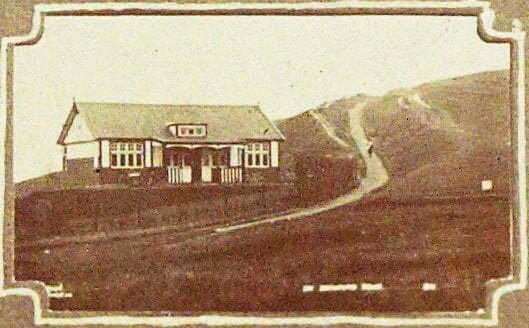
We used to play golf and my elder brother became very good.
We started playing at about age 14. Shawford golf course was very nearby, just the other side of the main road, which is now the M3.
It was only nine holes, and then it was increased to 10, and there was one green keeper, who did everything that was needed to look after it, three times a week.
Golf was a great asset. I suppose the ground belonged to some charity, and for some reason you were not allowed to use it on a Sunday.
I think even my father and mother thought that was a bit hard, particularly as some people came down for the weekend, bringing their golf clubs, thinking they could use Shawford golf course, but no, that wasn’t allowed[6]Sunday golf was not permitted because the Shawford golf course was on land leased from the church. Read more about the Shawford Golf Club
James Nairne’s memories Part 2

The community in Compton and Shawford in those days was fairly close knit. People didn’t entertain in a formal way much. They didn’t give lunch parties and dinner parties were very rare. Very occasionally my parents had people in for dinner, but only friends they knew very well.
The thing that did take place was afternoon tea. I remember being pushed down the stairs from the nursery, where I had my tea, to meet my mother and father’s guests. I think they probably just talked about gossip within Compton and Shawford.
When we were older, if we were invited to someone’s house to play tennis, that would be a sort of tennis party, and we were expected to dress in whites. You couldn’t turn up in casual clothes.
My parents had these quite frequently in the summer months. The guests used to come at 3 o’clock, and at 4 o’clock there was a break for tea and then they went on till 6 o’clock, we were offered a glass of cider. They were great social occasions.
My father said that in Compton and Shawford there were about 18 tennis courts at that time.
The main shop was run by a family called Webb. Father Webb was a man I remember very well. He had a great white beard and he always seemed rather severe. He handed over the running of the shop to his son who was called Willie Webb, and was always behind the counter.
He ran the grocer’s shop right up until about the time of the end of the Second World War. It was a shop which sold all groceries. The bakery was next door up a little alley, run by Fred Fancy, who made the bread very early in the morning.
Willie Webb had everything but was rather second-rate. My parents used that shop just for extras or last-minute things that they had forgotten to buy.
They used to mostly deal with Charles Smith who had a much larger shop, up in Twyford, called the Twyford Stores. My mother used to walk there and would often take us with her. We would walk all the way from Plover Hill to Twyford, which would take a good half an hour and walk back with the shopping. I remember the type of straw bags, she used. “An expanding basket” they were called.
The shop had a delivery service too. I think Charles Smith handed over to his son just before World War II. The son made a nonsense out of it and it didn’t work out. There was also a lovely shop called the “Alls Worth Stores,” which was sort of general purpose and where you could buy everything from cotton to a needle to probably even a dress or a tie.
In Twyford there were two butchers and two bakers, and, if we were very good, my mother would allow us to each buy a bun in one of the bakeries, as a sort of treat, after the shopping was over. She would not allow us to be seen eating a bun in the street, which would have been thought to be very improper, so we would then have to walk down a quiet-ish road, which was a longer road than the road directly back to Compton and Shawford, so that no-one would see us.
In Twyford there was a blacksmith who intrigued us. He was a proper blacksmith, always hammering things down. I suppose it was horses’ shoes. There was a boot-maker, called Mr Bound, and he used to come out on his bicycle, when he had done the repairs, to deliver them.
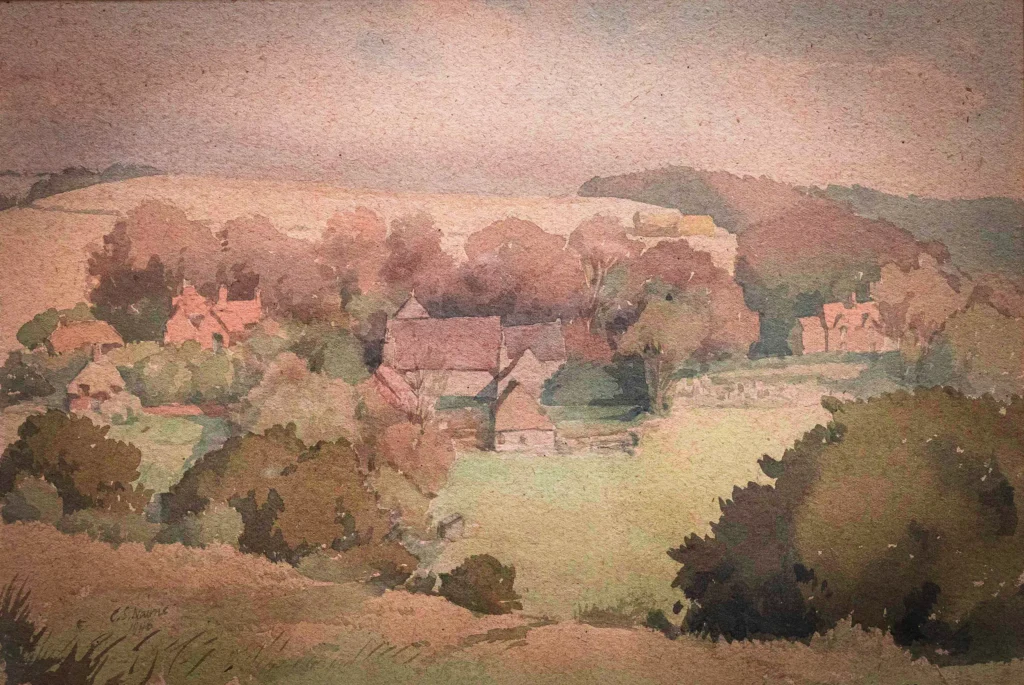
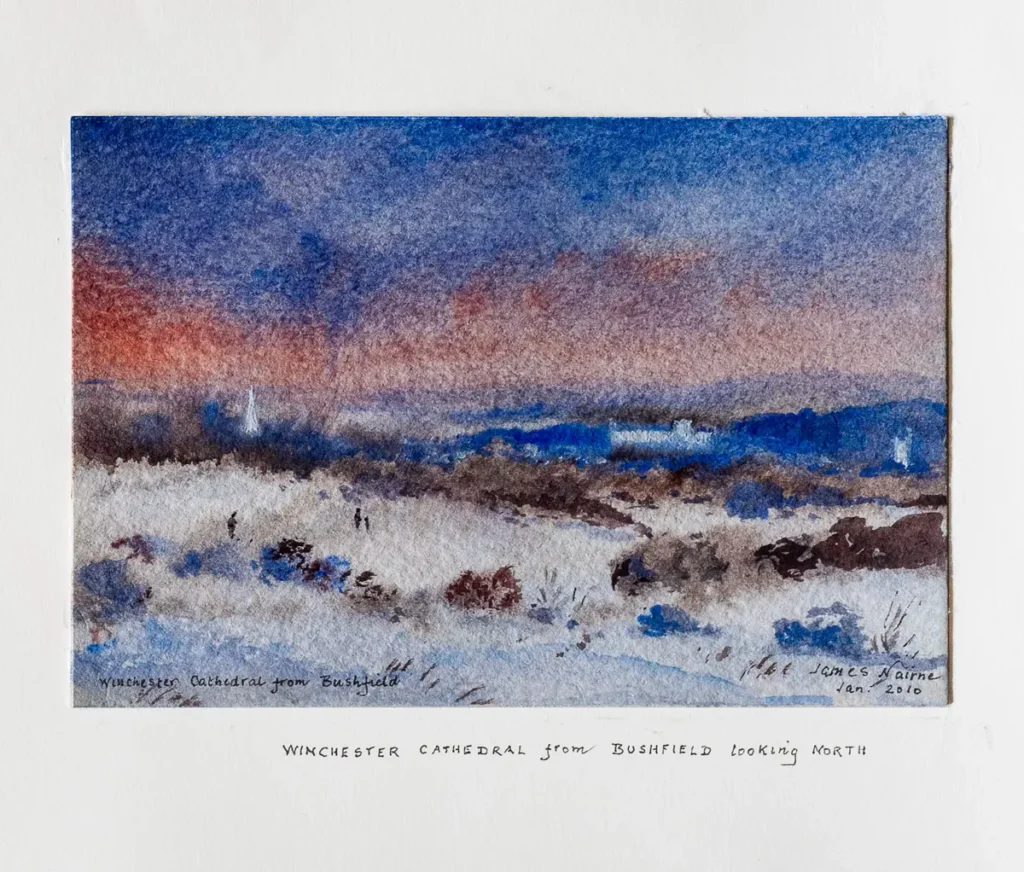
My mother, and sometimes my father went to Winchester on the bus, usually once a week. The fare for an adult from the bottom of Compton Hill, before you got to the turning into the church, was 4d for an adult and 2d for a child under 14. That was just a single fare and that took us in as far as Saint Thomas’s Church, which was really the beginning of the shopping centre of Winchester.
I always thought that to go to Winchester was rather a treat.
The Hampshire and Dorset buses, until about 1935, were open at the top, not closed in, and even in the worst of weathers we would like to go and sit on top. You can see so much more. My mother didn’t object to this at all, as she was rather a fresh air fiend[8]Another bus route, Service 2 to Fishers Pond, run by King Alfred Motor Services, used to pass Shawford Station. The double deckers would only fit under the railway bridge if they kept to the centre … Continue reading.
My mother had a wicker basket in which to put all the products she wanted to buy. I remember her buying fish from two fisheries in Winchester. One was the large chain called MacFisheries and there was a local one as well.
Twyford had, I think, only two public houses. Shawford had one, just below the railway station and they took in bed and breakfast guests.
There was one old chap there, whom my father didn’t really care for, called Brigadier General B, and he had his own sitting room. He was a permanent guest and he used to go out on the golf course in Shawford at about 11 am and play golf on his own. I don’t remember my father ever saying to him, “Would you like to have a game?” He preferred to do it on his own.

My mother was a member of both the Compton and Shawford church choir and the choral society and both my parents were involved in The Heathcote Players, which got started in the 1930s.
The first thing that really got going was the annual pantomime. I think the first one was in 1937.
I remember my brother Patrick[9]Patrick appeared in the 1938 Shawford Pantomime, “The Sleeping Beauty or Compton awakened,” produced by Mrs Mellor, who also wrote the script. The Beauty was played by 17 year-old Jean Tillard … Continue reading was a leading light in it and that he had to sing a song. He took part in many pantomimes and I remember being used to sell programmes or something like that.
The actors and actresses were mainly young people and it went on for four nights after Christmas, until just before the term started.
Editor’s Notes January 2024
I first met James Nairne early in 2019 when he helped me find the house once known as Hatch Thoke, where Arthur Heathcote’s daughter Dorothy then lived with her husband Arthur Crawford Lee. James remembered them as neighbours.
That house is now called Wayfarers. The Nairne family had rented Compton Lodge, which stands next door to Hatch Thoke, while Plover Hill was being built.
You can read more about James’ life on the Hampshire Chronicle website under the heading “Hampshire D-Day veteran celebrates 100th birthday”.
With many thanks to James’ niece Kathy and nephew Sandy who sent us the text and provided accompanying images.
References
| ↑1 | James dictated these memories for the parish magazine to his niece Kathy. She finished transcribing them (and reviewing them with other family members) just in time for James’ 100th birthday on 7 December 2024. They were serialised in two parts in the Compton & Shawford Parish Magazine issues for January and February 2024 |
|---|---|
| ↑2 | James told me that his father’s early retirement from the army was a result of the “Geddes axe”, sweeping reductions in the size of the armed forces to save costs after the end of the Great War. |
| ↑3 | In 1937, the eldest of the four brothers Nairne, Alistair (Sandy) sadly died of appendicitis and peritonitis, just after his 17th birthday. He is buried, with his parents, in Compton churchyard. |
| ↑4 | Ralph Burn gave a talk as one of four addresses at the “Songs of Praise” festival on 2nd November 1980, celebrating the 75th anniversary of the 1905 extension to All Saints’ Church, Compton, available on this Local History Society website as “The Verger’s tale” |
| ↑5 | James’ father was an excellent and prolific water-colourist and Art Master of Winchester College (1939-46). James’ elder brother Sir Patrick Nairne was (amongst many other things) a gifted painter whose pictures were exhibited in the Royal Academy, the Royal Institution and the Royal Society of British Artists. James also painted; his view of Winchester Cathedral was on the front cover of the January 2024 parish magazine. |
| ↑6 | Sunday golf was not permitted because the Shawford golf course was on land leased from the church. Read more about the Shawford Golf Club |
| ↑7 | William Dring was a young artist who lived at Windy Ridge in Cliff Way. He was very much encouraged by Lt Col C.S. Nairne and became a close family friend. He in turn encouraged James’ brother Patrick to develop his own painting skills. The Coincidence of Novembers – writings of Sir Patrick Nairne, edited by Sandy Nairne, pub 2020 |
| ↑8 | Another bus route, Service 2 to Fishers Pond, run by King Alfred Motor Services, used to pass Shawford Station. The double deckers would only fit under the railway bridge if they kept to the centre of the road. In 1962, and again in 1963, buses were damaged when they failed to keep the correct line under the bridge. King Alfred Motor Services – the story of a Winchester Family Business, pub 1984. |
| ↑9 | Patrick appeared in the 1938 Shawford Pantomime, “The Sleeping Beauty or Compton awakened,” produced by Mrs Mellor, who also wrote the script. The Beauty was played by 17 year-old Jean Tillard (later Yonge) whom readers may remember. C&S Parish Magazine, February 1938 |

